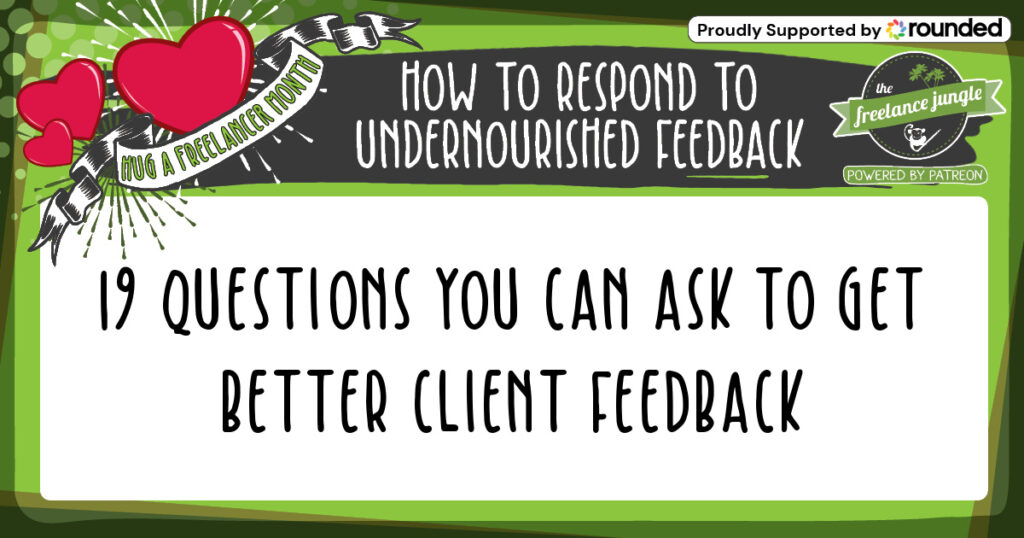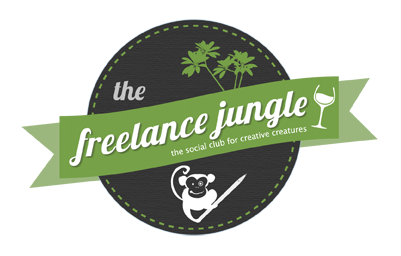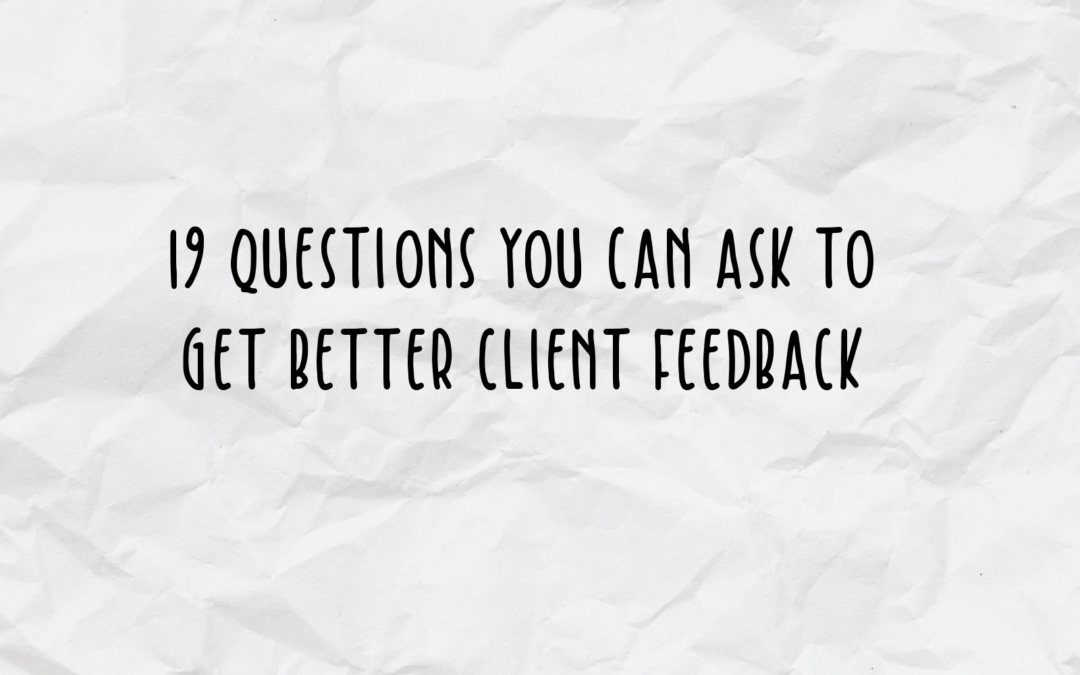Feedback is a vital part of improving your work, hitting the project target, and ensuring client satisfaction. However, simply asking for feedback isn’t enough – you need to ask the questions that give you valuable insights that you can act on.
In this article, we’ll explore 19 questions you can ask to get better client feedback. From understanding their needs to identifying areas for improvement, these questions will help you gather the information you need to improve your services and strengthen your client relationships.
So, let’s dive in and discover the questions you should ask to get the most out of your client’s feedback.

Art by Jessica Harkins of Six Onions
Starting the process properly
To build a sound foundation for a project, you need to articulate well. Any hazy ideas that the clients have about the project need to find themselves an anchor. And the best anchor for fuzzy ideas and wishes is to ask a person to share what they want to see because of the project.
Here are some questions to ask:
- What would you like your customers to get out of the experience?
Clients are human. They can sometimes get caught up in exploring ideas based on personal wishes (i.e. assumptions, curiosity, wanting to copy competitors etc) and/or organisational theory (i.e. things that look hot on paper but lack functionality in the real world). This question is important because it reminds the client the customer exists, and that’s where the focus should lie.
- What do you want to achieve?
- What process did you go through to get to that decision?
As simple as it sounds, what you’re articulating here are the project goals and the reasoning behind why this project is taking place over other options.
- Can we please book a call?
A lot of freelancers muddy the feedback waters through an insistence on email communication. There are many reasons talking on the phone or Zoom is a better idea, especially if there is a mismatch between client expectation, freelancer production, and project potential. But the main one is this – two people talking things through is better than two isolated people trying to figure out what the other person is saying behind two separate screens. Email sucks at capturing nuance. Dig in on that nuance to get to where you need.
Shaping the feedback quality
Very few clients are trained in the art of asking or answering questions. But as freelancers, it’s our responsibility to take a moment and reframe the feedback process into an action-orientated activity.
Sometimes, clients need a little help to articulate why they feel the way they do. That’s why zeroing in and shaping can really help create space for the feedback process.
- Can you give me some examples of images, style, tone of voice, language, intent etc that I can use?
This sets a baseline of expectation that you can use before or during a project. Gaining these insights and then furthering it so you can apply them really helps.
- What is it about these examples that speak to you?
It’s one thing to have a pretty mood board that looks like a nice, on brand exploration of a tone of voice or a mood within colours or styles. It’s another thing to break it down and get a client thinking about it in relation to what they want.
- Please share an appropriate paragraph/panel that reflects the tone you are after.
This is when you turn it towards the work you have supplied. This can be as part of a draft or even your preparation notes for a project. It helps the client feel in control while also helping you dig deep enough. Plus, it trains clients to give worthwhile feedback and stay away from the dreaded, “something like that!” response.
- When you say you don’t like it/you want more pop, what do you mean by that?
- Can you qualify that for me?
- In response to “I don’t know what I want but I will like it when I see it,” try – this does not give me enough to work with. Have you got examples of what you want?
We’ve all heard the rejection phrases that don’t make much practical sense. Let’s not forget that while our clients may have varying degrees of understanding of the work we’re doing, they aren’t us. This is your opportunity to grab the bull by the horns and nut out what they are trying to say by asking clarifying questions. It also puts ownership on the client to move away from fantastical thinking and also face the constraints within a project in a supportive manner.
Articulating negative feedback
The instinct is probably not to dig in on the feedback, especially if it’s negative. But we invite our shame and frustration to the table if we don’t. Grabbing the negative feedback and testing its validity can help you improve the work. It can also teach a client to have more realistic standards for the work at hand.
What you want is specifics. Because specifics make even reflect on the work in realistic terms.
For example:
- In what ways do you think I have not met the brief?
- What are the differences you see between the brief you gave and what you have received?
Your best friends are the project and the brief. Do what you can to remind your client that how you reach the project’s destination is by following the brief as a roadmap. Not deciding to drive cross-country and take detours because it’s scenic and appealing!
- The more information you give me, the better. Taking the emotion out of it, can you describe why the work does not meet your standards?
- Taking an objective stance, how would your customers respond to the work as it presently stands? And what do you think they need more/less of to connect with it?
This is useful for anyone who has a bit of a rise to their temperature but is still rational when giving feedback. Reminding them again of the customer helps create the connection you need.
- While I know there’s a lot riding on this project, I am not the problem. The project’s direction/draft is the problem. What can we do about refocussing the feedback back to the project?
This is especially true if a client is personalising the feedback and being pointed or even nasty. You don’t have to settle for rude, shame-based feedback. Nor do you have to cop frustration and anger.
Oh, and if a client continues with poor behaviour, don’t be afraid to say:
- I am here to help, but I cannot continue this meeting if you continue to speak to me like that.
- Now is not the right time for this discussion. Once you’ve had time to collect your thoughts, let’s talk again.
Just because someone is delivering bad news or difficult feedback doesn’t mean it has to feel like a wrecking ball right through the work or your confidence.
Reframing the conversation to the positive
Listening to negative feedback all day sucks. It is a demoralising process. It’s also not healthy for projects because it doesn’t uncover the balance needed to build a second draft. Plus, it leaves you both focussed on the negative instead of the middle ground.
- What did you like about what you received?
- In what ways do you think I have exceeded the brief?
Even a project that needs a complete redraft has highlights within. Finding those moments not only informs creating a positive project, it also helps heal the relationship between freelancer and client while reframing it to focus again on the project.
- What action would you like me to take?
Giving a benign question and summarising what action will result because of their feedback helps allay client fears by making them feel heard and back in control.
- From the start of the call to now, how are you feeling about the work now we’ve have talked about it?
Asking them to check in with their feelings is also a great way to ground a client and get you both focussing on the positives.
Want additional help gaining insightful and useful feedback from your clients? Find more resources on the Freelancer Appreciation Page today!
Thank you to our sponsor Rounded for supporting this blog post and making it possible. <3 If you’re looking for more advice to make your freelancing sing, check out their whopping 71 pieces of advice from successful freelancers.

